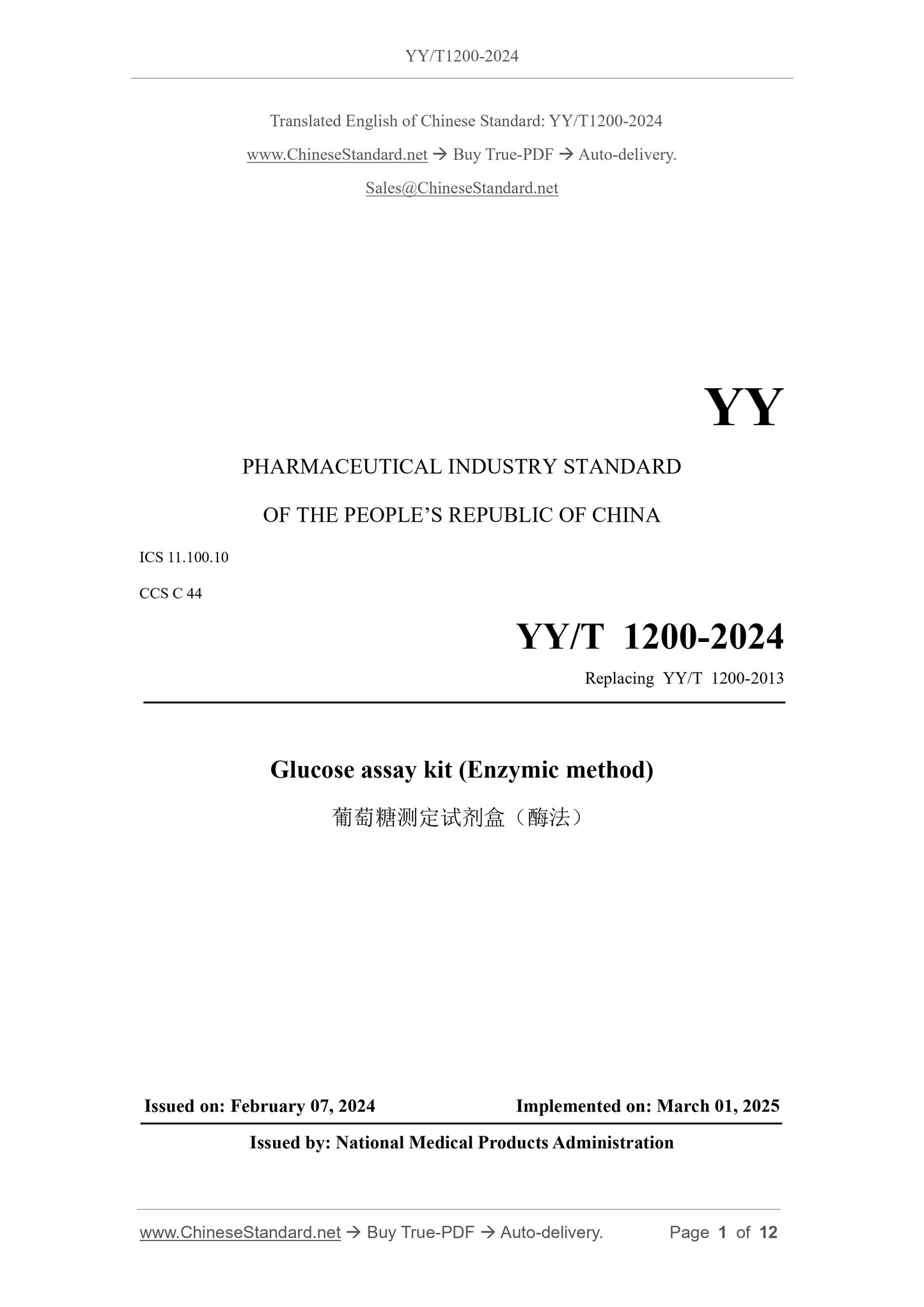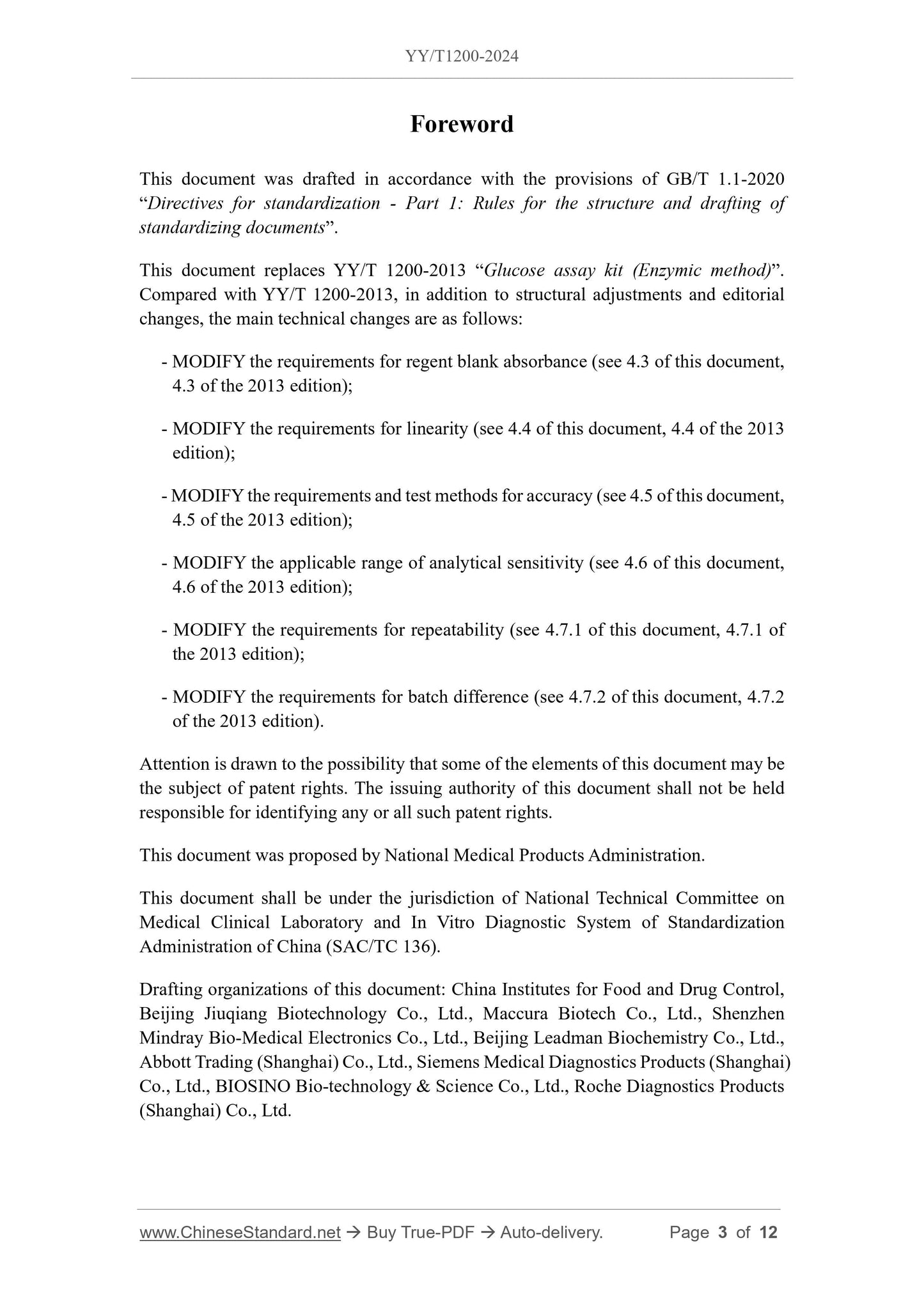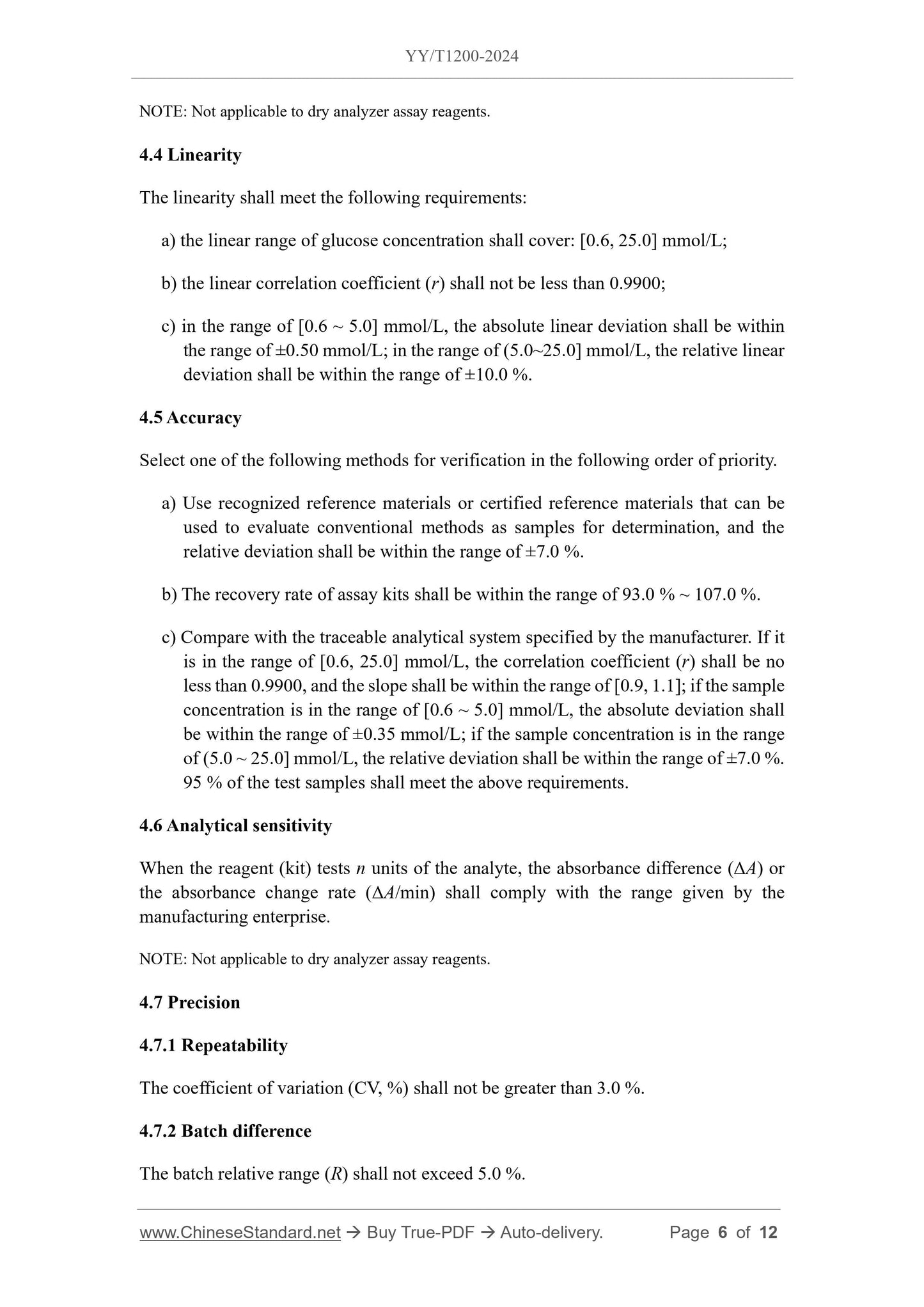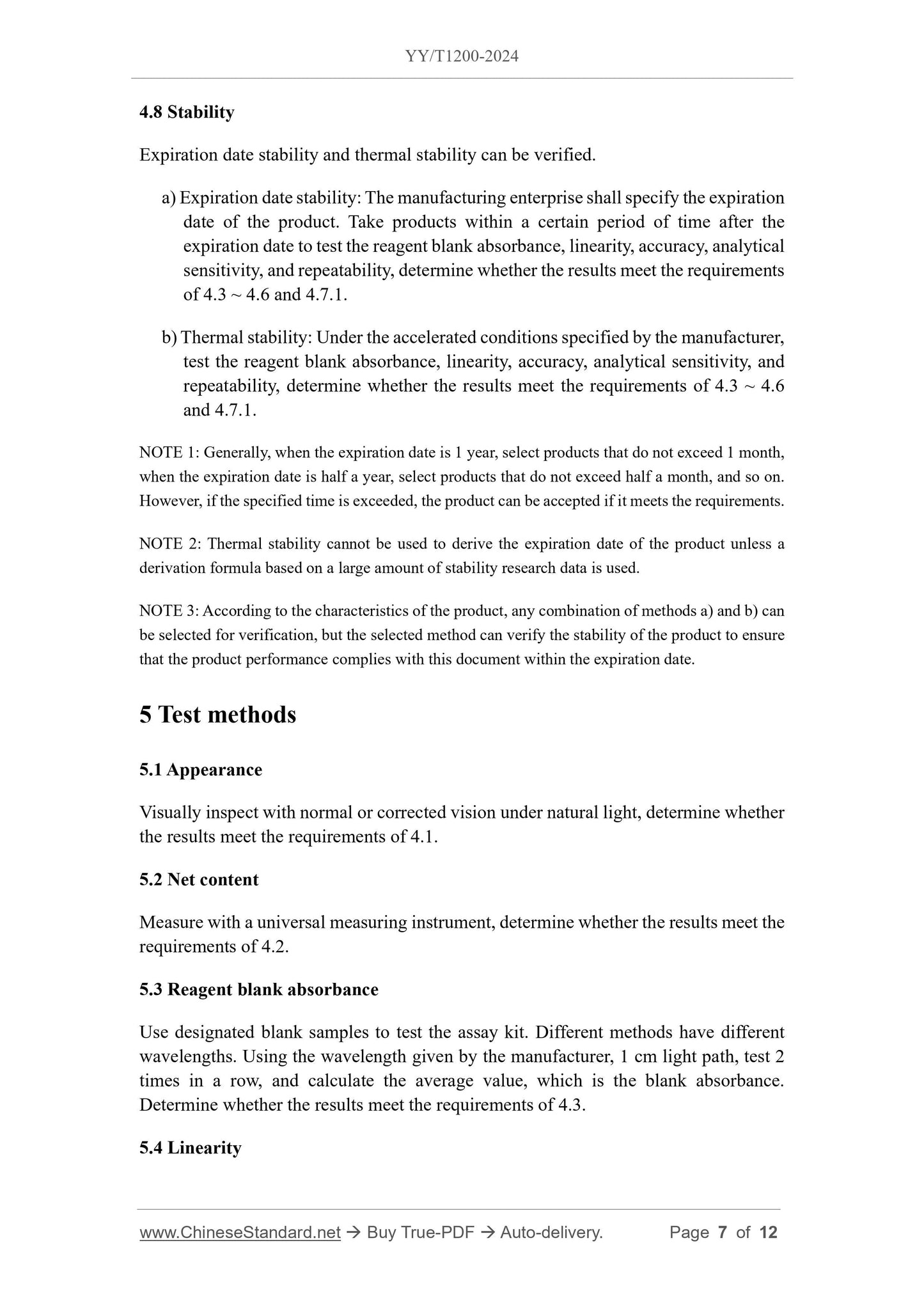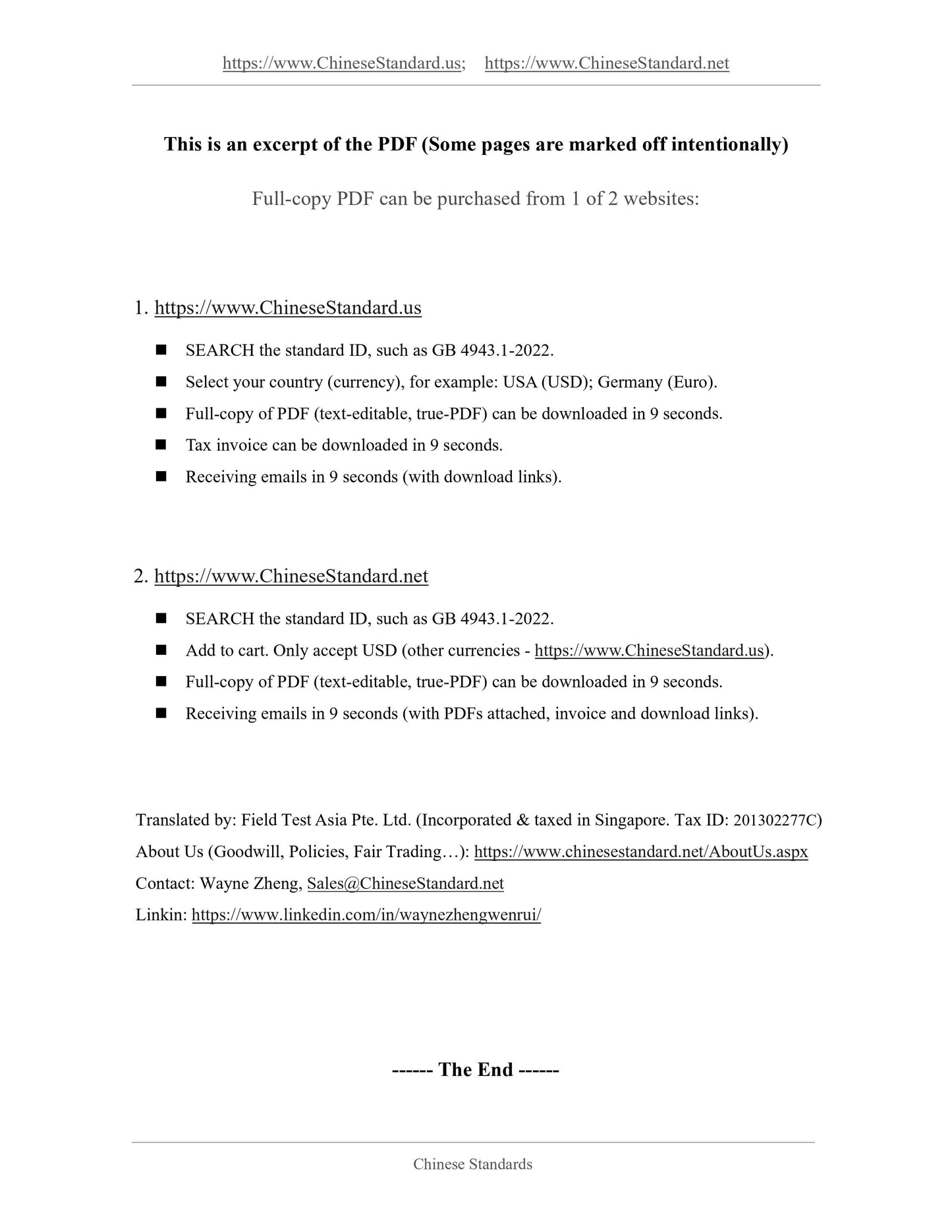1
/
of
7
www.ChineseStandard.us -- Field Test Asia Pte. Ltd.
YY/T 1200-2024 English PDF (YY/T1200-2024)
YY/T 1200-2024 English PDF (YY/T1200-2024)
Regular price
$195.00
Regular price
Sale price
$195.00
Unit price
/
per
Shipping calculated at checkout.
Couldn't load pickup availability
YY/T 1200-2024: Glucose assay kit (Enzymic method)
Delivery: 9 seconds. Download (and Email) true-PDF + Invoice.Get Quotation: Click YY/T 1200-2024 (Self-service in 1-minute)
Newer / historical versions: YY/T 1200-2024
Preview True-PDF
Scope
This document specifies the requirements, labeling and instructions for use, packaging,transportation and storage of glucose assay kits (enzymatic method), and describes the
corresponding test methods.
This document applies to determination of assay kits by hexokinase method and glucose
oxidase method, which are used in clinical tests to quantitatively analyze the glucose
concentration in body fluids such as serum, plasma, urine, and cerebrospinal fluid.
Basic Data
| Standard ID | YY/T 1200-2024 (YY/T1200-2024) |
| Description (Translated English) | Glucose assay kit (Enzymic method) |
| Sector / Industry | Medical Device and Pharmaceutical Industry Standard (Recommended) |
| Classification of Chinese Standard | C44 |
| Classification of International Standard | 11.100.10 |
| Word Count Estimation | 9,925 |
| Date of Issue | 2024-02-07 |
| Date of Implementation | 2025-03-01 |
| Older Standard (superseded by this standard) | YY/T 1200-2013 |
| Issuing agency(ies) | State Drug Administration |
| Summary | This standard specifies the requirements, labels and instructions for use, packaging, transportation and storage of glucose determination kits (enzymatic method), and describes the corresponding test methods. This document is applicable to the hexokinase method and glucose oxidase method determination kit, which is used for quantitative analysis of glucose concentration in serum, plasma, urine, cerebrospinal fluid and other body fluids in clinical testing. |
Share
